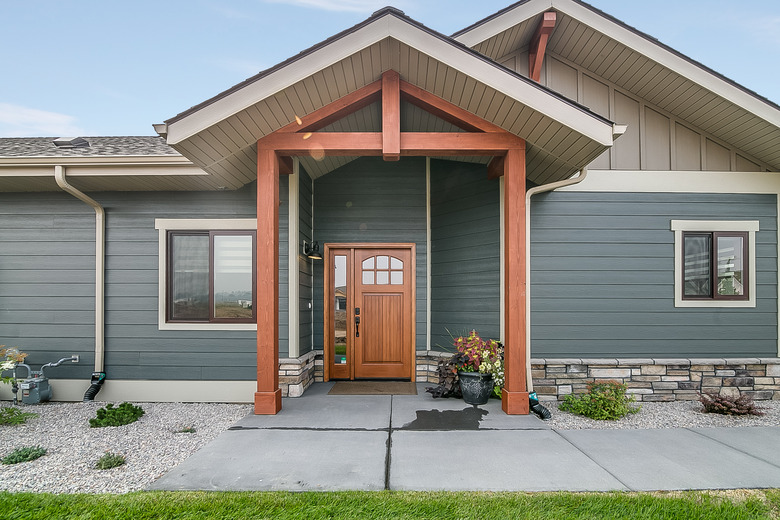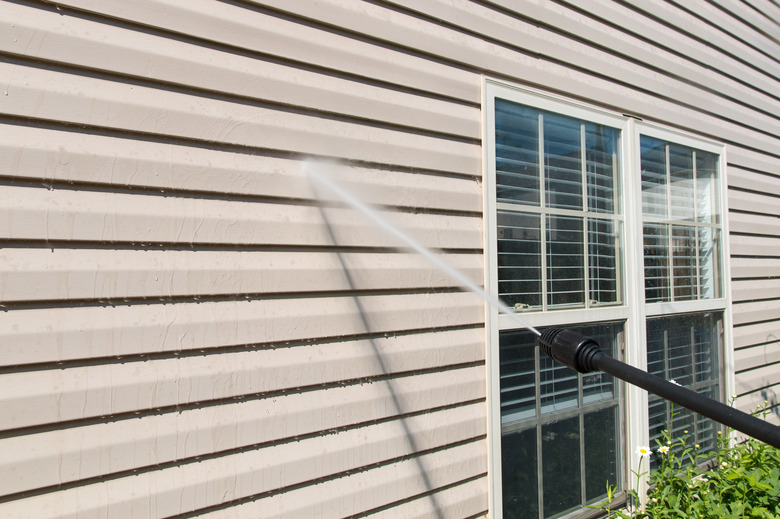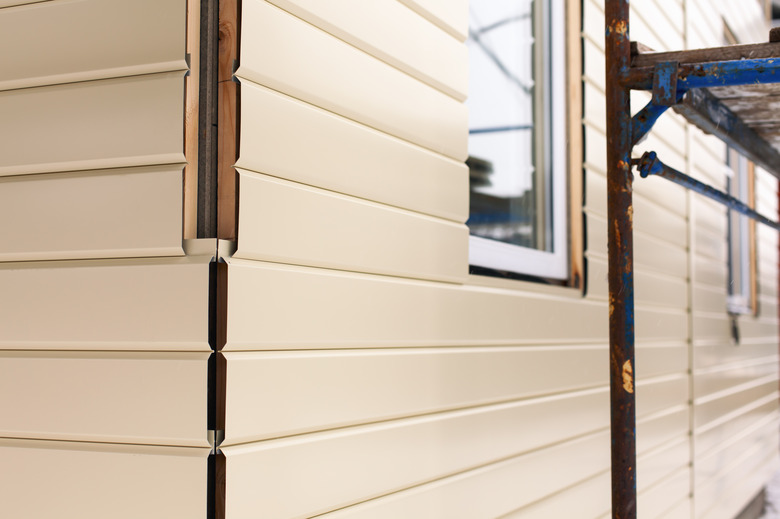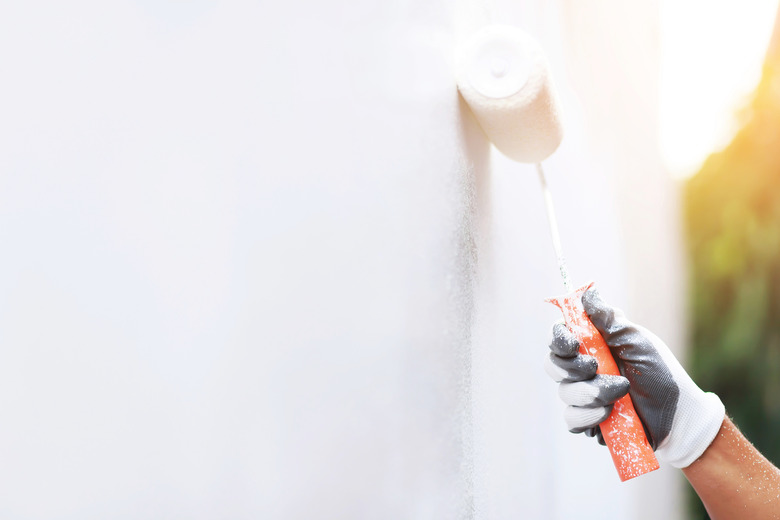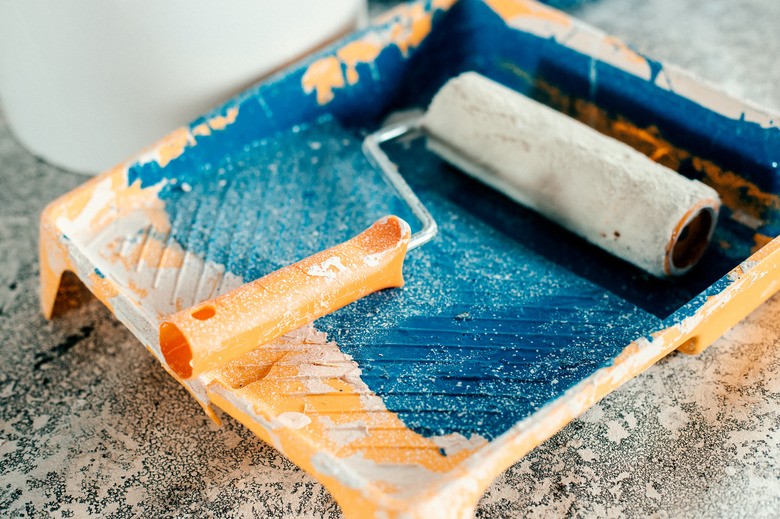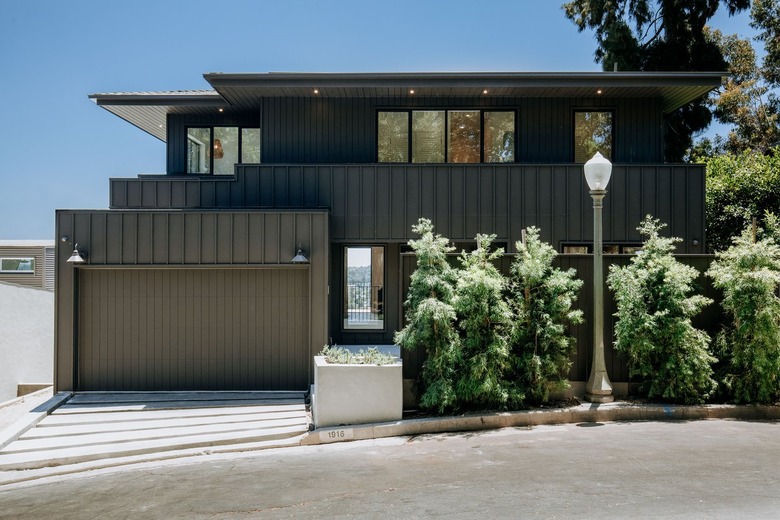How Long Do Exterior Paint Jobs Take?
How long will an exterior paint job take? You can expect a professional painting crew to take at least four or five days total for an average-sized house with three people working on it, but exterior painting can take much longer, especially if you do the job yourself without any help. It can take solo DIYers weeks to paint the exterior of their house, depending on a few important factors.
Cleaning the House Exterior
Before you can paint, you need to clean your home's exterior thoroughly. Even if the siding doesn't look dirty, it likely has dirt, pollen, bugs, and other outdoor debris on it. Any debris left on the siding when you paint will create a bumpy texture, and the paint might not stick well to the siding.
Whether you clean the exterior yourself or hire professional painters to do it for you, cleaning will take several hours depending on the size of the house and how dirty it is. Cleaning is important to getting a smooth finish and paint that sticks, so you don't want to cut any corners.
Prepping for an Exterior Paint Job
Another part of the prep work is preparing the job site and making necessary repairs. This process will typically take at least one day, but it could take longer if you have a lot of repairs to make. You (or the pros you hire) will need to take time to put drop cloths over landscaping to protect it from paint drips, set up ladders or scaffolding, and make any necessary siding repairs before applying paint.
Surface prep and repairs to your home are where the project can vary, and it can end up taking a long time. Before you can start your paint job, you need to make sure the surface is in good condition and ready to accept paint. Some of the tasks you need to do include:
- Scraping loose or peeling paint
- Sanding the surface
- Replacing damaged wood trim or siding pieces
- Securing loose siding
- Filling holes
- Replacing loose or damaged caulking
This can take several days if you're working alone depending on the extent of the damage and how many issues you need to repair. You can also hire a handyman or contractor to complete the repairs before you start the paint job.
Painting the House
As long as all the prep work is done properly, the painting process is relatively straightforward. But that's not to say that it isn't time-consuming. A professional crew with commercial-grade paint-spraying equipment will likely take at least two to three days to paint the exterior of a house.
DIY painting will take much longer since you likely don't have the same equipment, number of people helping, and relevant experience. Using the guideline of three times as long as a professional, it could take you six to nine days (or, in some cases, longer) to paint. You'll need to apply at least two coats of paint and leave time to dry between the coats. Weather delays can extend the timeline.
A professional painting company can handle the work faster than you can, especially if they have a large crew. Painting companies typically use sprayers and might use scaffolding that they don't have to move around, so they can cover the surface faster. If you're using paint rollers instead of sprayers, it's a much slower process. Even with a sprayer, you can still expect it to take several days longer than a professional.
Cleaning Up the Mess
If you cover your plants with drop cloths, it's a good idea to uncover them every day once you're finished painting so that they can get some natural sunlight and fresh air. When you're completely finished with the paint job, you'll need to take down the ladders and scaffolding, remove all drop cloths, and clean and put away the painting supplies and tools you used. You should be able to clean up in a few hours depending on how much you have to clean.
Factors Affecting Exterior Painting Time
Several factors can affect the time an exterior paint job takes. It's difficult to shorten the time by too much, but several things can make the painting process take longer.
House Size and Style
One of the biggest factors is the size of your home. he more square feet you have, the longer it takes to prep and paint the surfaces. The style of your home is also a factor — certain styles tend to be larger and more detailed, with lots of hard-to-reach areas. A small, modern ranch won't take as long to paint as a large, two-story Victorian home with intricate detailing above every window.
Unlike interior painting, which has controlled conditions, an exterior paint job can be affected by the weather. The temperature significantly affects the paint drying time, with extreme temperatures slowing down the process and extending the amount of time it takes to paint the house. Water-based paint generally does best between 50 and 85 degrees Fahrenheit, while oil-based paint works between 40 and 90 degrees. Some paint is designed to work in as low as 35 degrees.
High humidity can also make your exterior paint job take longer. Excess moisture can slow down paint drying, so you'll have to wait longer between coats. If it rains during your paint job, you'll have to hold off until it stops and the siding dries. In general, you should always follow the instructions on your paint and take a look at the weekly weather forecast before getting to work. Paint during a stretch of mild weather, with no rain (or other precipitation) and low humidity.
The number of people helping with the home exterior painting project can affect how long it takes. If the homeowner decides to paint the entire house exterior without help, the project could take weeks. Painting services with large crews can knock out the project relatively quickly.
Different types of siding can affect how long it takes to paint your house. Wood can rot, splinter, or deteriorate faster than some other types of siding, so it often takes longer to prepare and repair before you can paint. Wood can also take longer to dry after you wash it or after it rains, which can delay your start.
Stucco can take extra time, especially if you have to patch damaged sections of it. You need to wait at least 15 to 30 days after patching before you can wash the stucco. Since stucco is porous, it can also take longer to dry.
If you pressure wash vinyl siding, the water can remain in the seams, so it needs plenty of time to dry after washing. Check not only the surface but also the seams after 24 to 48 hours to see if it feels fully dry before attempting to paint it.
A pristine home that needs little to no repair work is much faster to paint than a house that's in poor condition. Peeling paint, damaged siding, missing caulking, and other damage needs to be addressed before you can paint. This can add a full day or more to the total painting project time.
Doing the painting work yourself can save you money, but it often takes a little longer than it would take a painting crew. Pros have the advantage of expertise — they know how to choose high-quality paint, they already have all the tools they need, and they know how to paint a house exterior properly. Additionally, painting companies often use lifts or scaffolding, which eliminates the need to move the ladder constantly, thus saving time.
If you do the work yourself, you might not be able to dedicate full days to painting like professionals do. You could spend a week or more doing all of the painting if you're only working on weekends or evenings. Even if you have several full days, it could take longer than expected if you're doing all of the painting.
